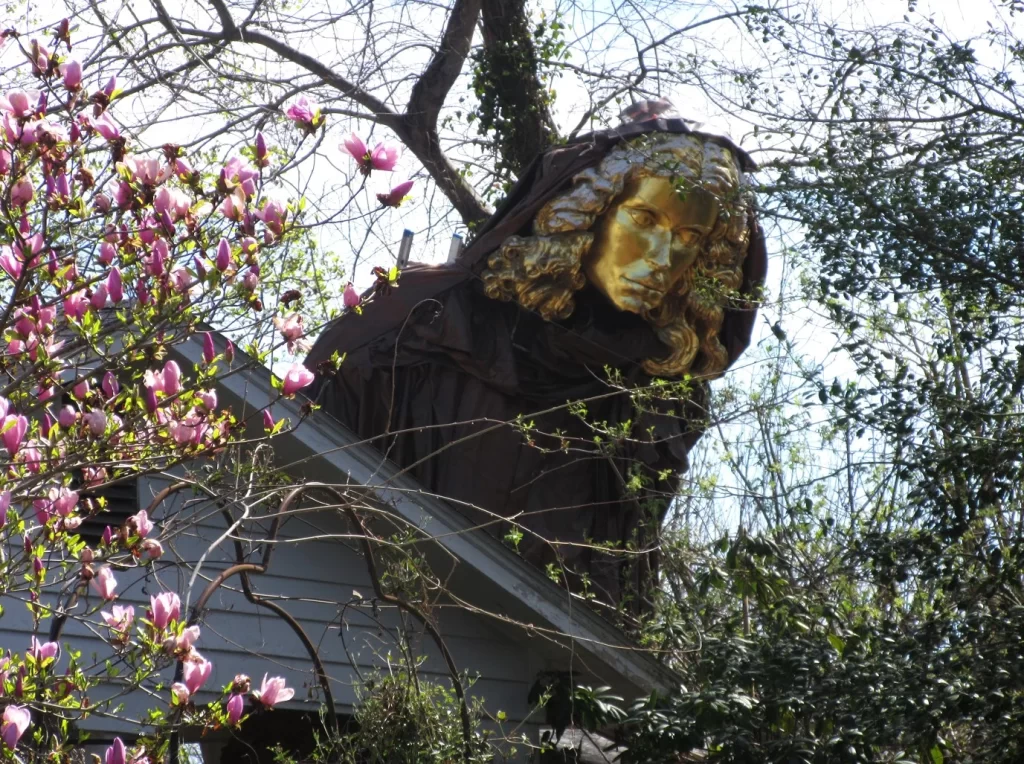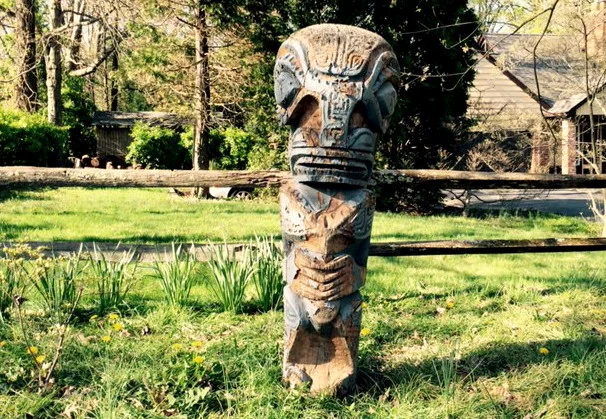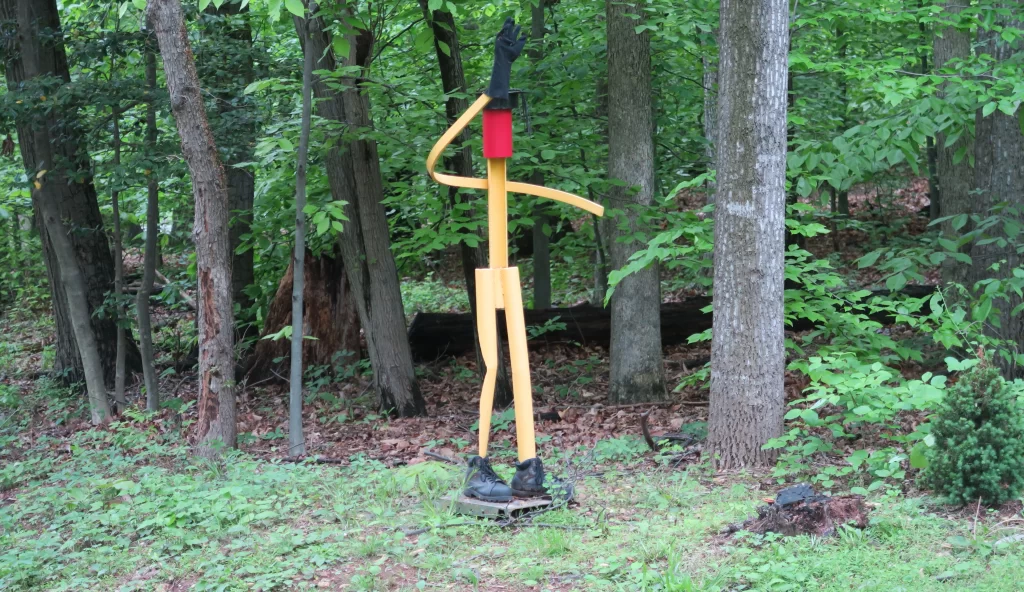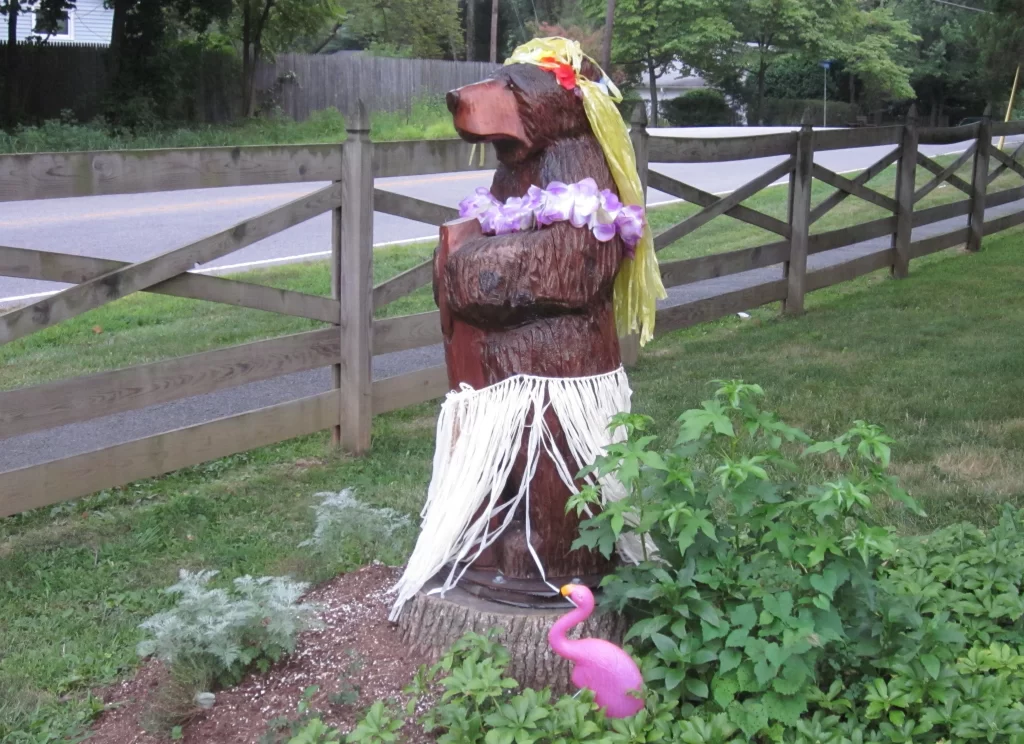Yard art: Splendor in the grass

The arts are truly alive and active throughout Mason District and throughout the eastern end of Fairfax County, says James Albright, chair of the Mason Arts Advisory Council (MAAC).
In collaboration with artists and local arts organizations, MAAC is inaugurating a new, creator-focused series in Annandale Today, with information on show openings, artist opportunities, and other art-related happenings in our community.
Today, we feature an article by Liz Milner about the art you see out of the corner of your eye while driving around Annandale.
Related story: Ideas proposed for expanding art opportunities in Mason District
For most of the 20th century, yard art was frowned upon, considered, at best, the domain of eccentrics and, at worst, a signal of depravity and a blight on the landscape. With the growing popularity of “outsider” art in recent years, yard art has been increasingly accepted.
I say, “Why stop there? Yard art shouldn’t just be accepted; yard art should be celebrated!”

On the face of it, yard art seems frivolous. There are urgent issues to be dealt with: climate change, wars, threats to democracy to name a few. I believe that yard art is one of those hidden threads that bind us all together. It’s intended to communicate, to create a sense of community. It’s one of the few forms of art that everyone can participate in.
Yard art turns spaces into places.
To illustrate this, let me tell you a story about my friend Nancy, who moved into the brand-new, planned community of Reston in the 1970s.
Reston was intended to be the town of the future, and its planners wanted the neighborhoods to have a uniform, modern look. They established rules to ensure that all home exteriors would look alike. They carefully regulated everything from paint color to the size of mailboxes. Yard art was expressly forbidden.

This caused my friend to have problems with her new home. She’d drive off to work in the morning, and in the evening, she’d spend hours driving through the streets of Reston trying to find her home amid miles and miles of identical houses.
One evening, she walked through her front door, hours late, and burst into tears. Her husband thought up a solution. He installed a large and ridiculous duck with flapping wings in front of their property.
Neighbors started coming by to thank them for installing the duck. Everyone had been having problems finding their way home. The duck became a landmark for the entire community. In no time, Nancy and her husband had met their neighbors and formed a social circle. They were no longer just another young couple in a suburb full of young couples. They were the “mighty duck people.”

During the pandemic, yard art entertained kids through “bear hunts,” where kids were encouraged to look for not-so-well-hidden bears in people’s yards and front windows. Yard art brought messages of hope and caring to the community.
Established yard art installations were landmarks, such as Felix the Bear, who graced the corner of Davian Drive and Ravensworth Road for years. His owners dressed him in various costumes, and during the pandemic, he wore a mask and gloves.
When neighbors could no longer meet face-to-face, they used yard art and yard signs to express their commitment to one another. Yard art became a fun and sometimes thought-provoking means of continuing civic life under trying circumstances.
Related story: Annandale’s got a new bear

